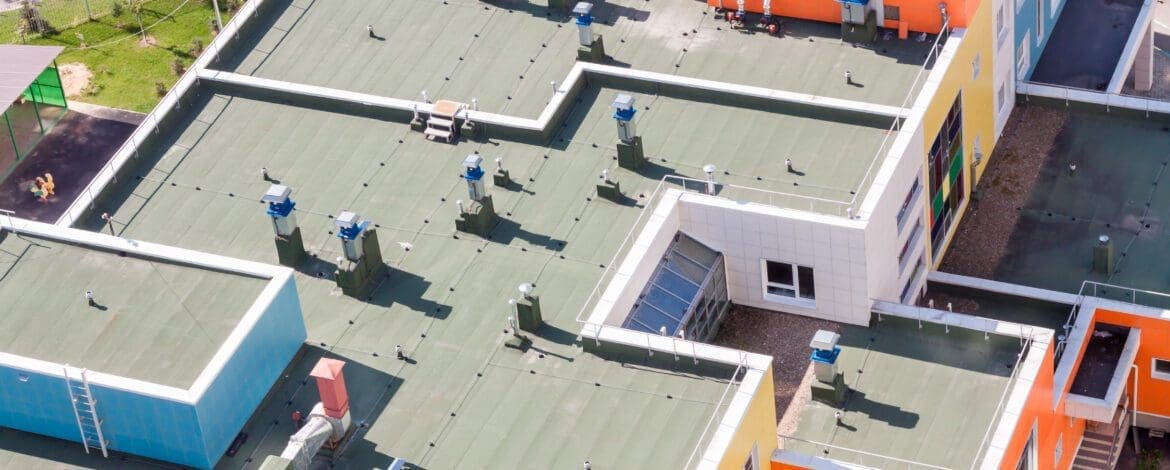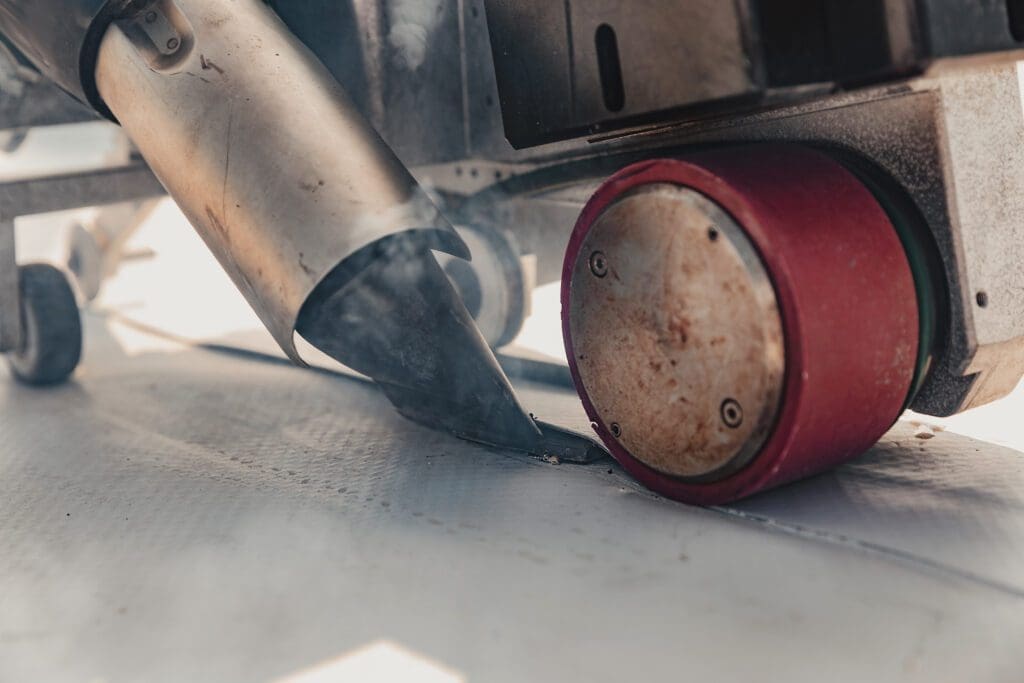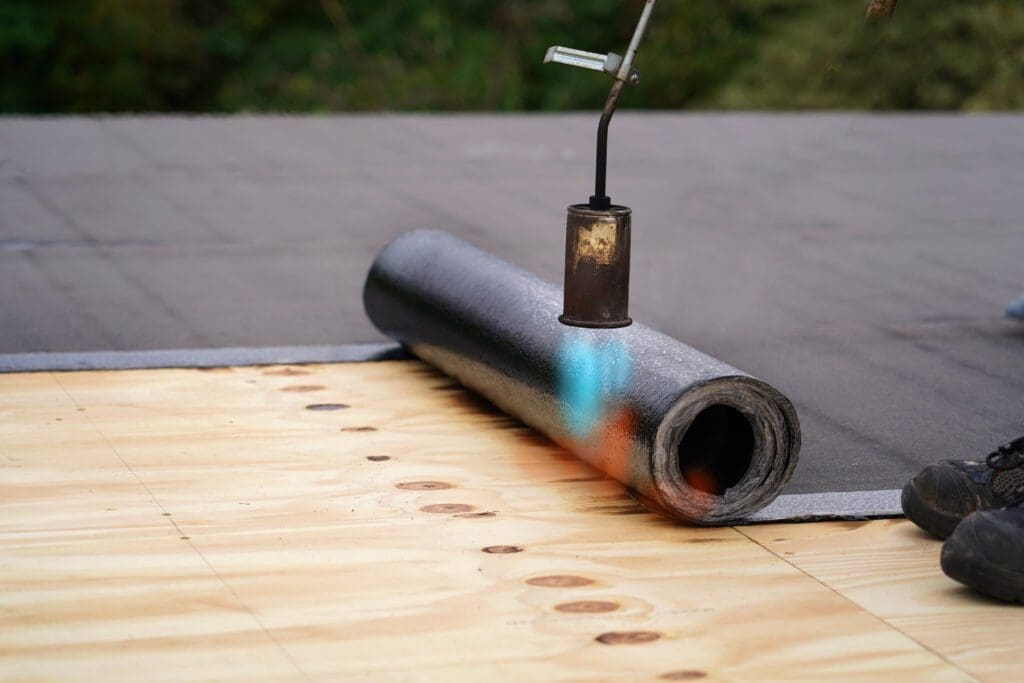Flat roofs are a popular choice for several different types of buildings. Retail, commercial, and industrial buildings typically use flat roofs, as do downtown legacy buildings all over the U.S. Stylish architect-designed homes often use flat roofs, also. Those tend to blend well with the dramatic designs that architects create.
If your building needs a new flat roof, you’ll notice a few different options. And you might find it tricky to differentiate among the variations. So let’s get into how to choose a flat roof.
First off, you’ll notice that there are membrane-type flat roofs and asphalt-type flat roofs. The membrane types are the newer types, but EPDM and PVC have been around for 50 years. They are totally proven in real-world use at this point. TPO has been in use for around 30 years and is offered by reputable manufacturers. I’d say that option is solid too.
Membrane roofs
Membrane roofs are basically huge rolls of plastic that your contractor rolls out over your roof to seal it from the elements. These materials are all similar but there are a few important differences.
EPDM Roofing
EPDM will often be the cheapest option. It typically comes in a dark gray finish that is a bit less energy efficient than a white finish, meaning it heats up a lot more. But using it over rigid insulation like 1–3″ of polyiso makes for an energy-efficient installation. It’s well-known to installers and readily available.
An EPDM roof will usually be glued down to the surface underneath, and the seams will be overlapped and glued together. All the penetrations around pipes, vents, and skylights will have glued-on “boots” or fittings to make them waterproof. These glued areas are the major weak point for EPDM roofs, and that’s not the case with TPO and PVC roofs. You can still get a solid and long-lasting 15-20 year EPDM roof, but just keep in mind that you will have to keep an eye on the seams and the fittings. You should check your roof out at least yearly, and especially after extreme weather.
As for the cost, you can plan on paying from $100–400 per square for tear off. Polyiso insulation will be in the range from $150–300 per square, depending on the thickess you go with. The membrane itself will cost from from $400–800 per square. A square, by the way, is a roofing industry term that refers to 100 square feet.
TPO Roofing
Though it’s a newer material than EPDM and PVC, I’d say TPO is now dialed in. GAF, for example, one of the major roofing manufacturers, offers a 20-year warranty with some of their TPO membrane systems. With a reflective white color, TPO will help you to keep the overall roof temperature down and so will be an energy-efficient choice, as well.
With TPO, your roof will have heat-welded seams, which will be the most durable approach; much better than adhesives. TPO can be either fully glued to the roof decking or adhered with fasteners, depending on the situation.
Your cost for tear off and insulation will be the same as for EPDM at $100–400 per square for tear off and $150–300 per square for insulation. The membrane itself will be $450–$1400 per square.
PVC Roofing
PVC has been the top choice in membrane roofs for more than 50 years. It’s a different material from TPO, but overall they’re quite similar. They’re both going to give you a service life of more than 20 years, though PVC probably still holds the edge. There’s just more data to back up the claims that it will last longer.
PVC, like TPO, gets heat-welded seams for the greatest durability, and your cost will be coming in a bit higher than for TPO. Tear off and insulation will be the same, at $100–400 per square for tear off and $150–300 per square for insulation, while the PVC membrane will cost from $850 to $1550 per square installed.
Keep in mind that these are rough estimates. You’ll want to talk to a contractor certified by the manufacturer of the roofing material. Also, if your home has skylights, solar panels, multiple penetrations, or parapet walls, all those details factor in to what a new roof costs.
Asphalt-based roofs
These types of roofs are totally different from membrane roofs, but they have their place.
- BUR: a built-up roof uses layers of asphalt-impregnated roofing felt topped with hot tar to create a waterproof barrier on top of the roof decking. The uppermost layer is topped with a layer of gravel so you can walk on it. This is a slow and smelly and vaporous process and is really considered to be outdated these days.
- Modified bitumen roofing: this type of roofing was developed in the 1970s as an update to the BUR system. A modified bitumen roof is a multi-layer roof that typically uses layers of asphalt that the crew rolls out and heats with a torch. As such, there’s some fire risk and the crew must be top notch. Instead of a load of gravel on the top layer, you’ll see a cap sheet that includes a reflective granular coating. As for cost, tear off and insulation will be roughly the same as for membranes at $100–400 per square for tear off and $150–400 per square for insulation. Your modified bitumen roof will run you $750 to $1350 per square installed depending on the project and location. That’s fairly expensive for a roof with a lifespan of just 10–20 years.
We’re Here When You Need To Choose A Flat Roof
We get it—having to choose a flat roof is not really a fun time. But we’re here to help. Whenever you’re ready, give us a call at 813-373-9088. Our team has more than 40 years of experience in roofing. You can also use this form and ask us, “what’s the cost to replace my flat roof?” and we will contact you.




